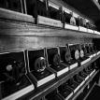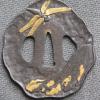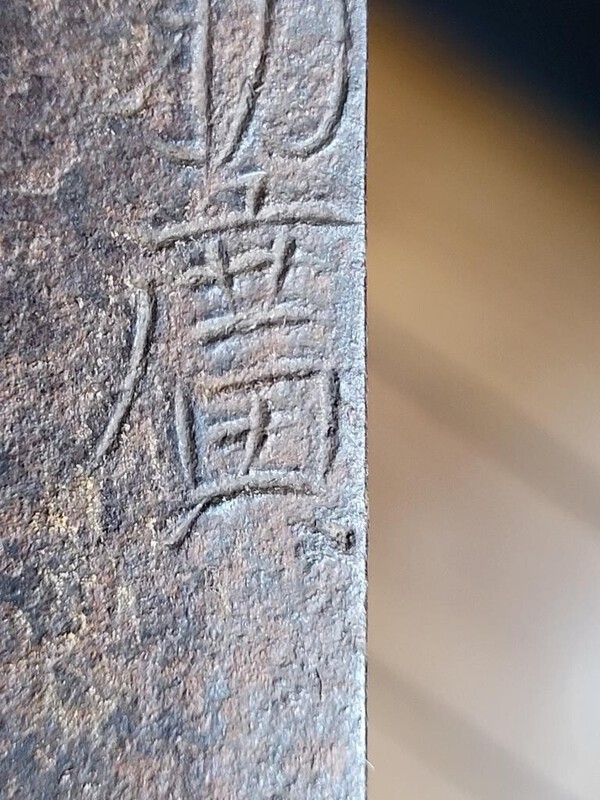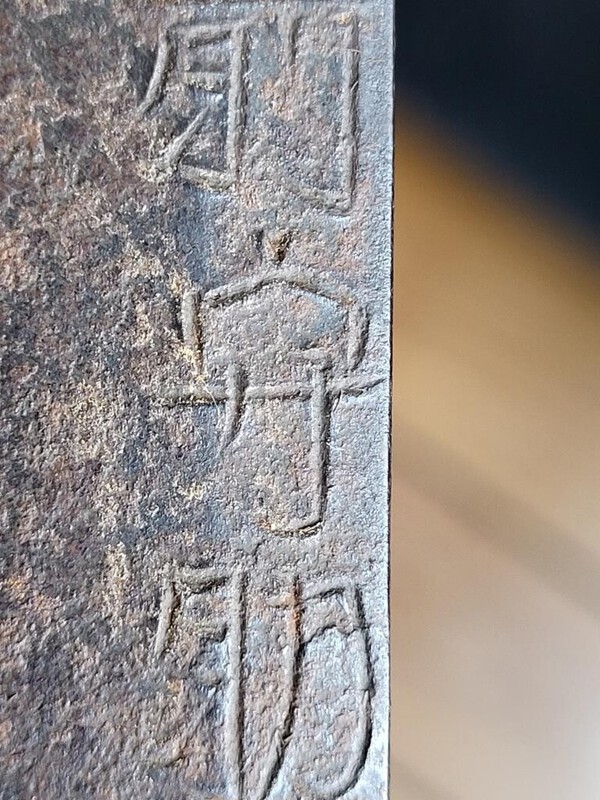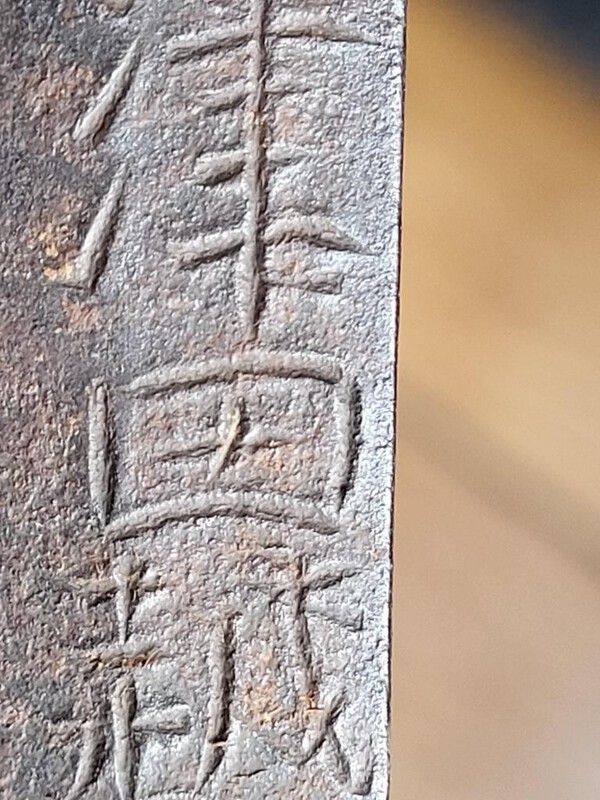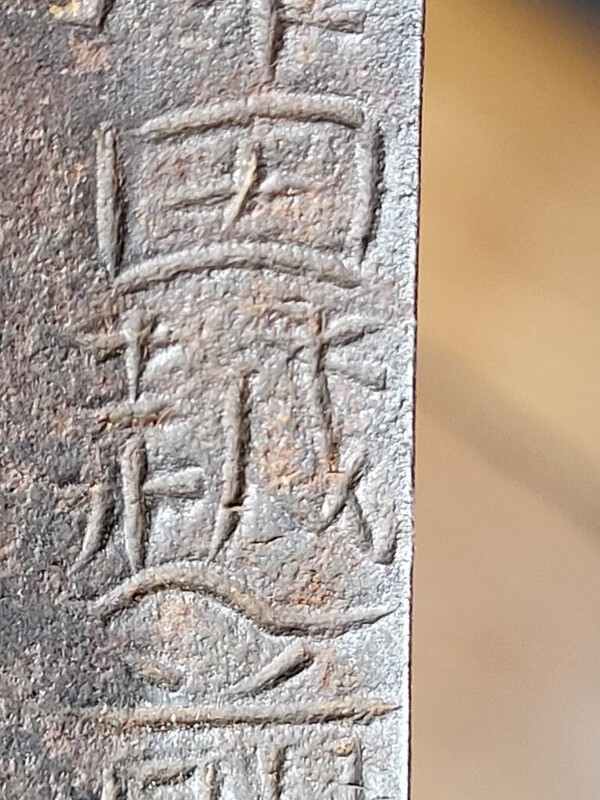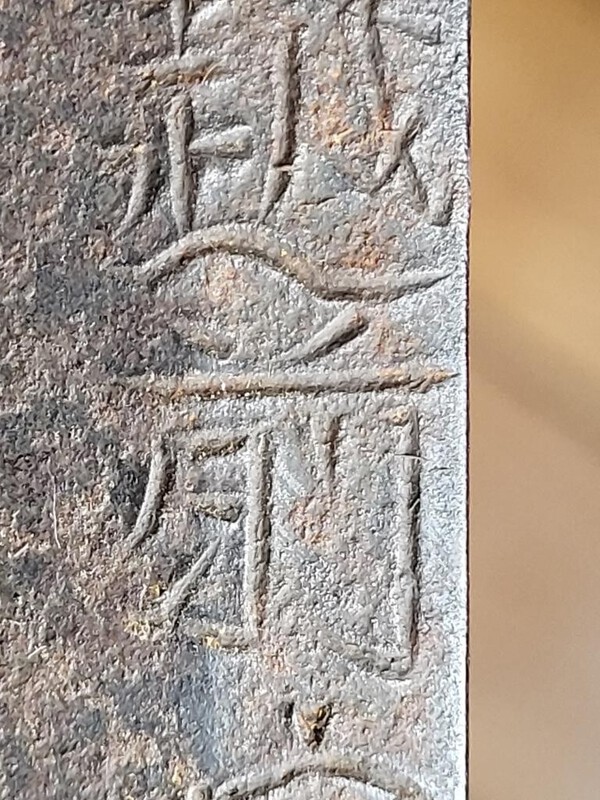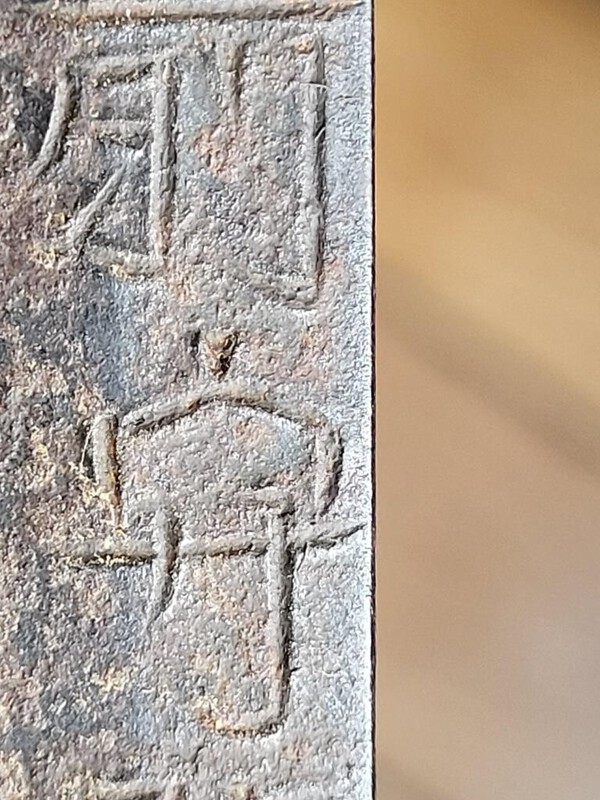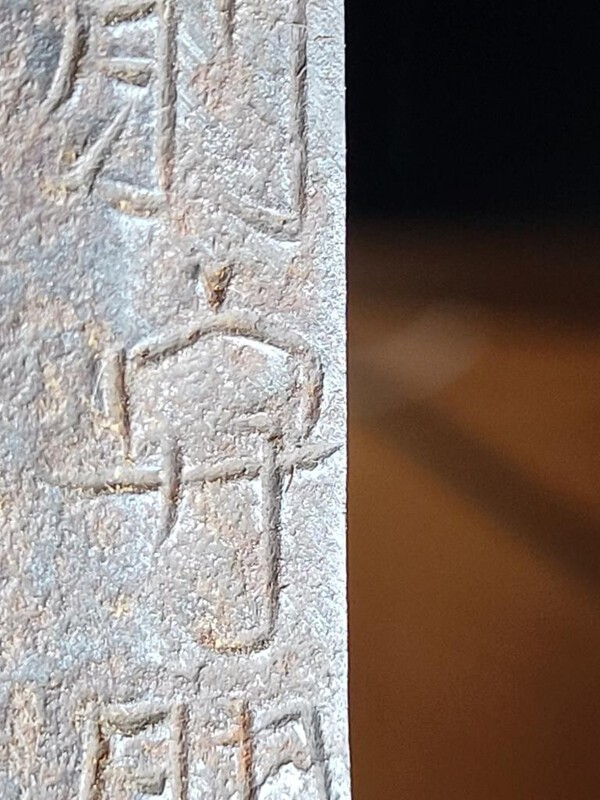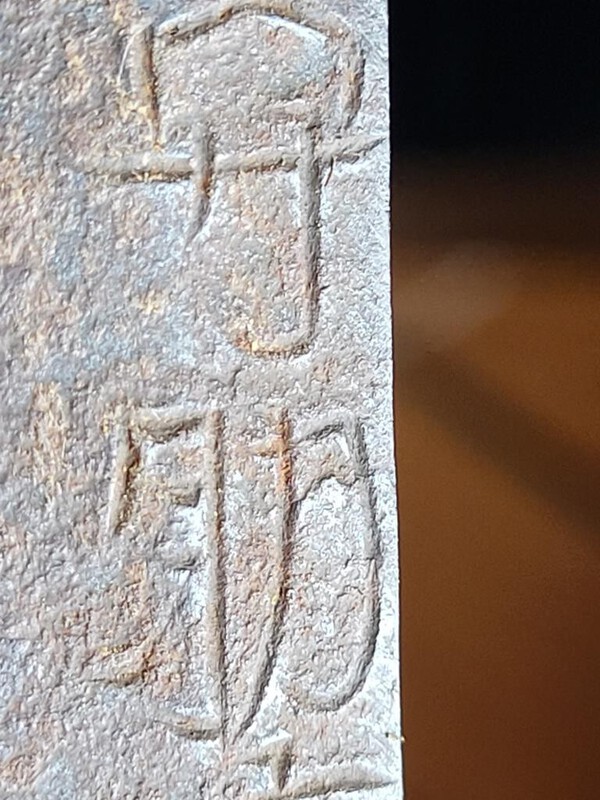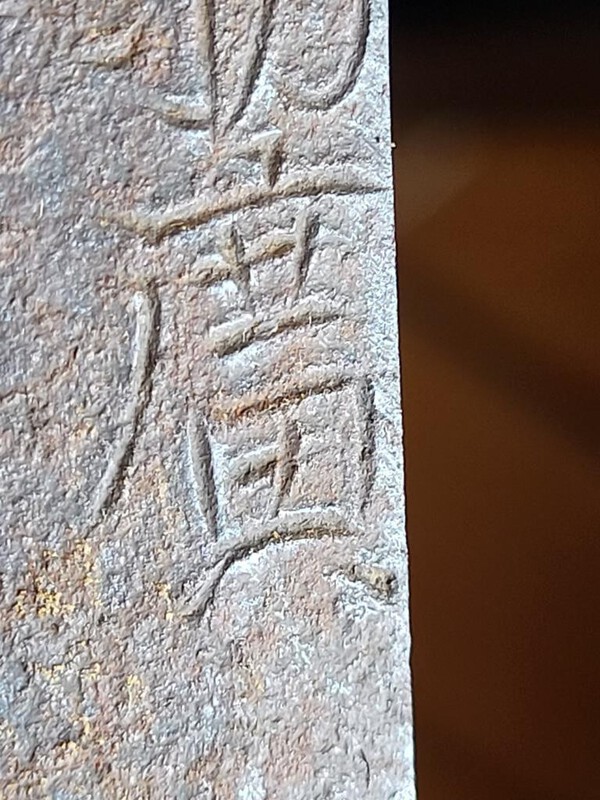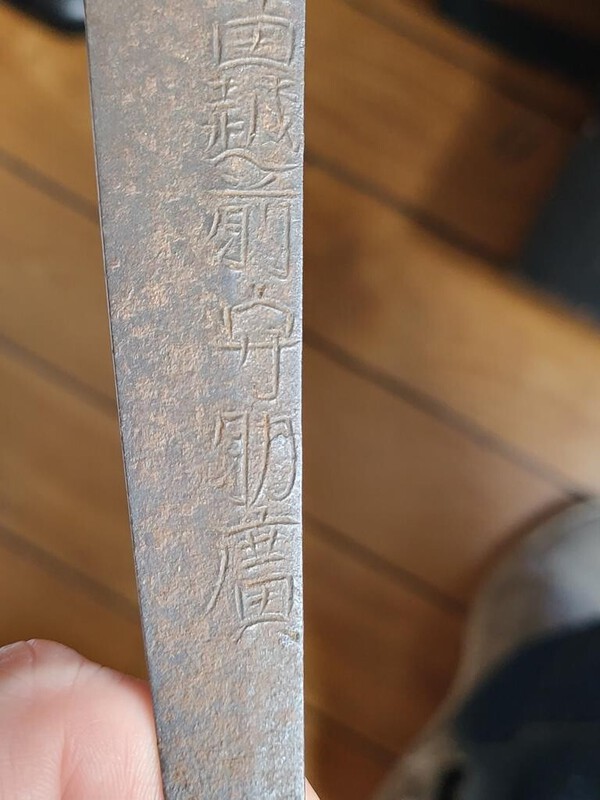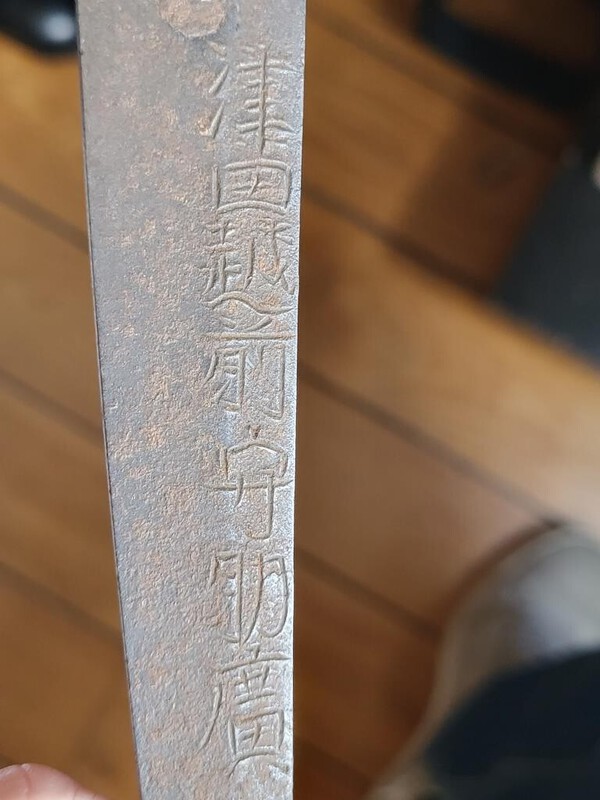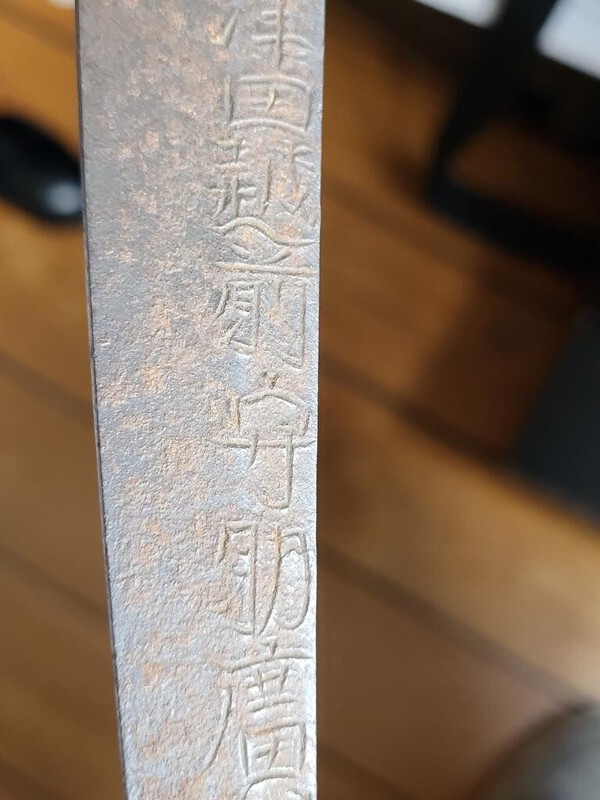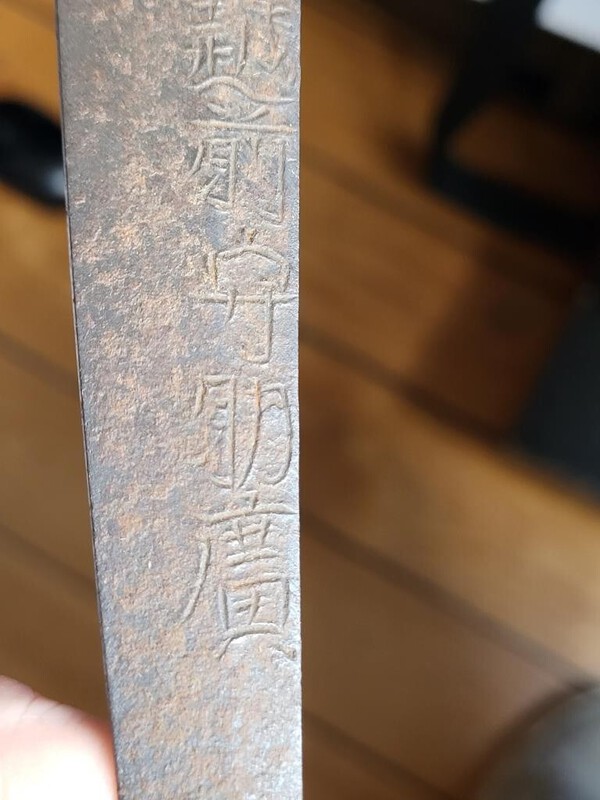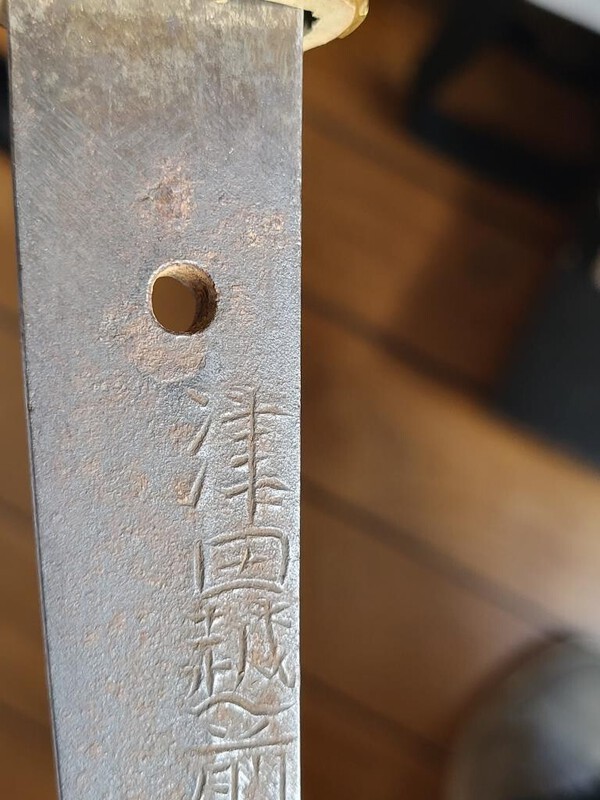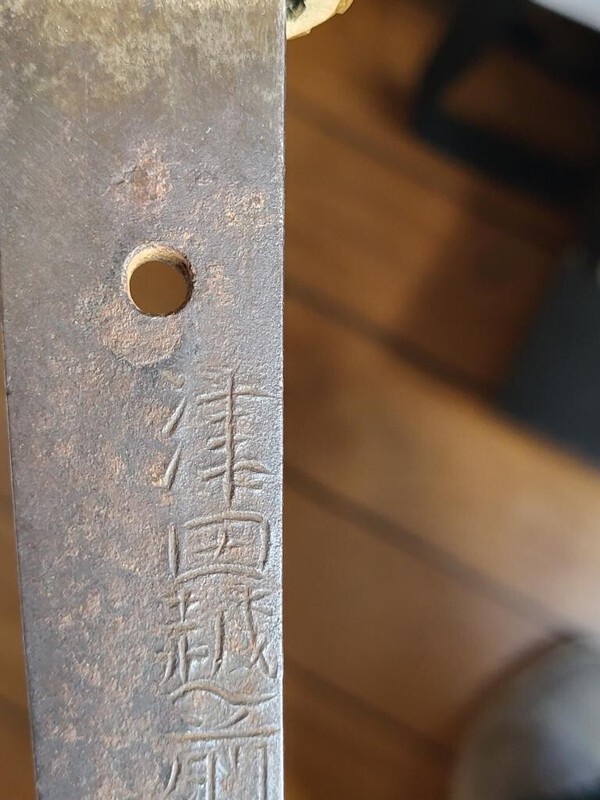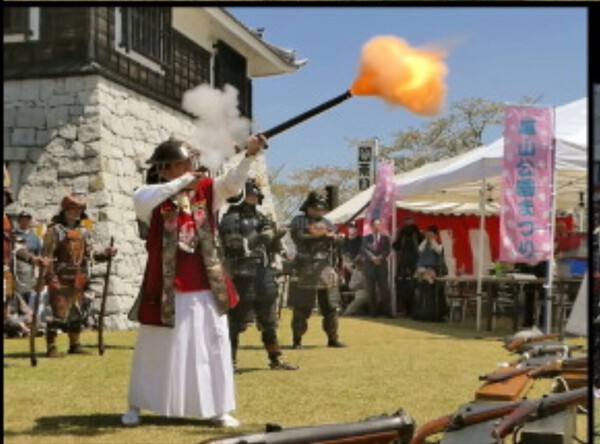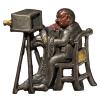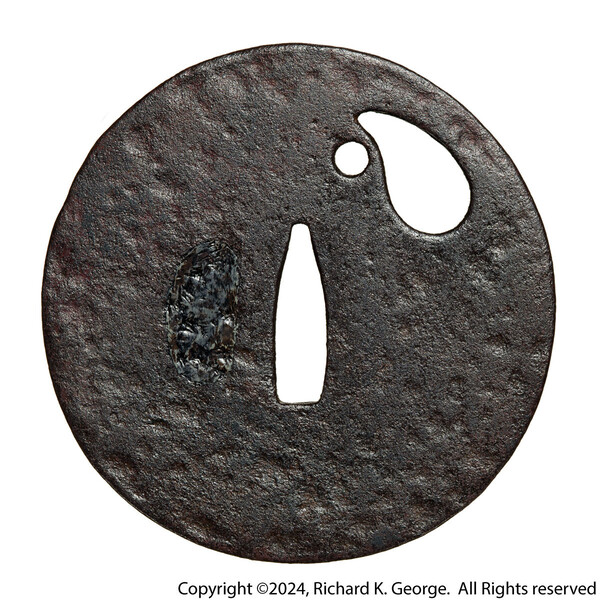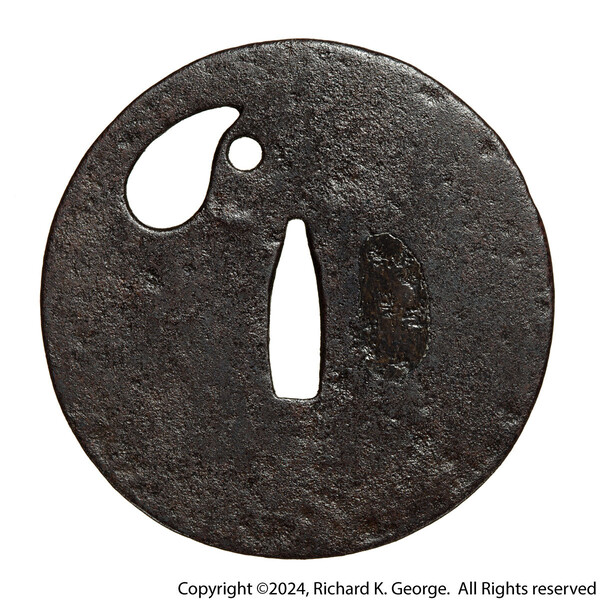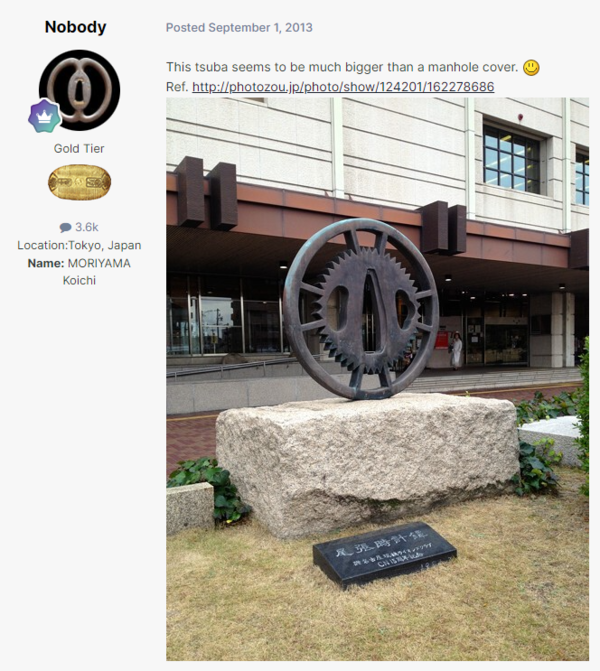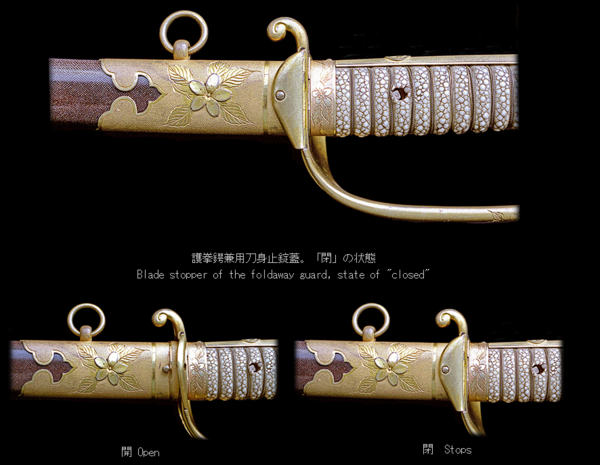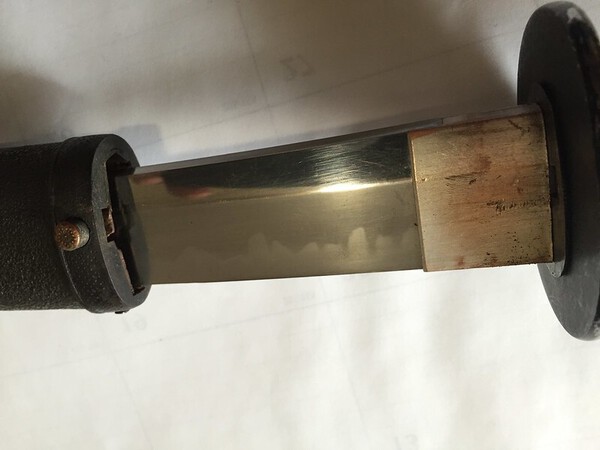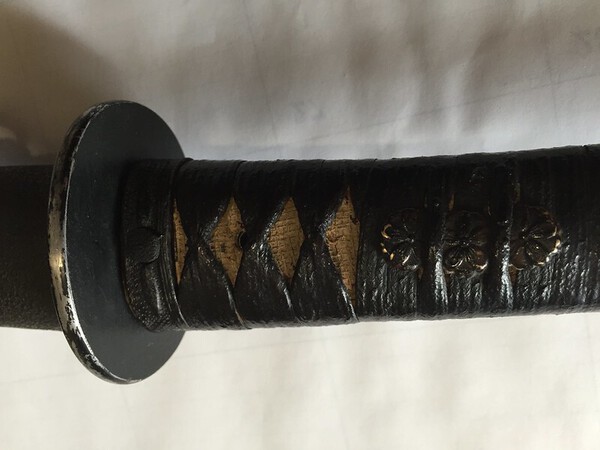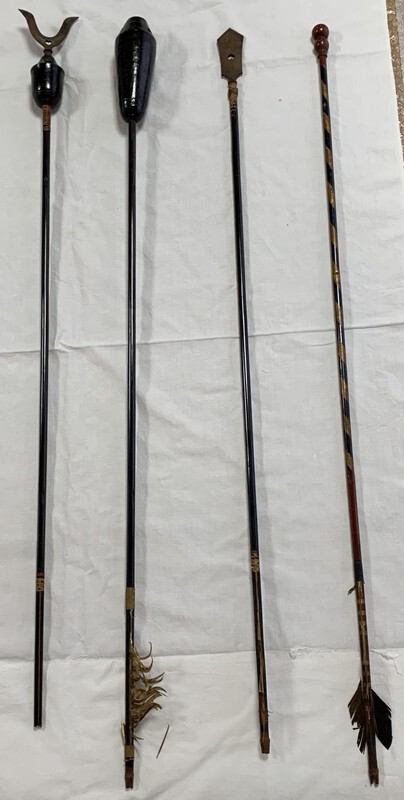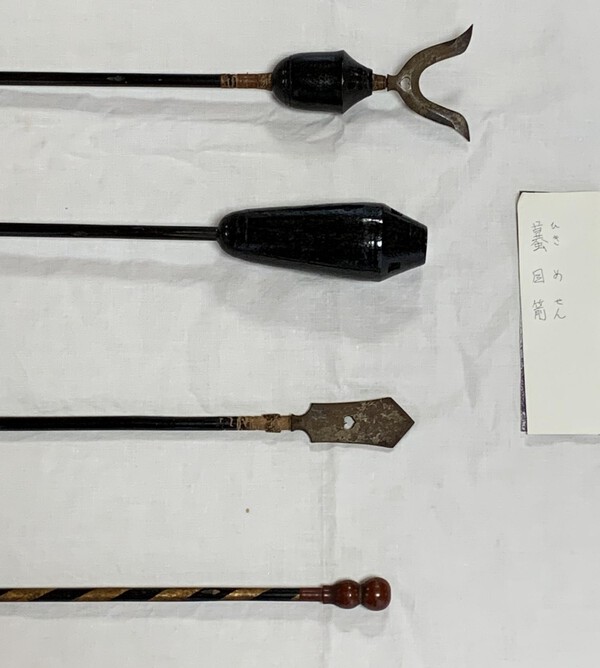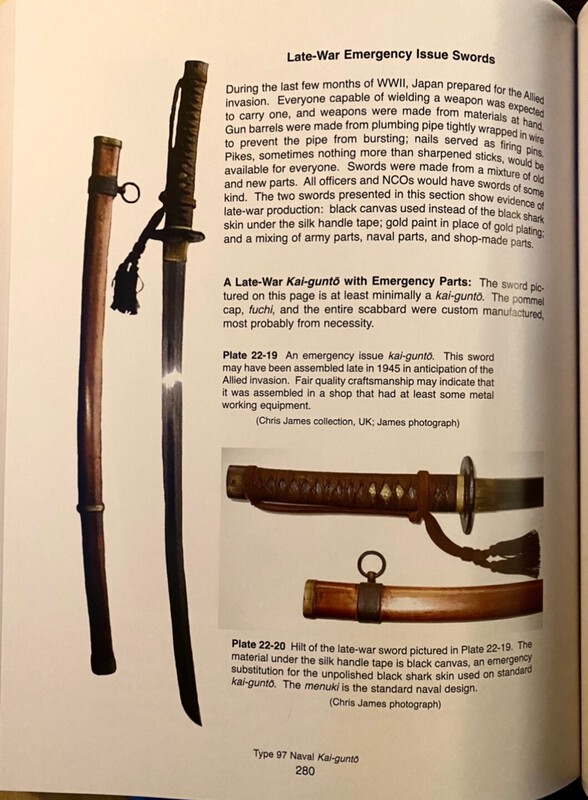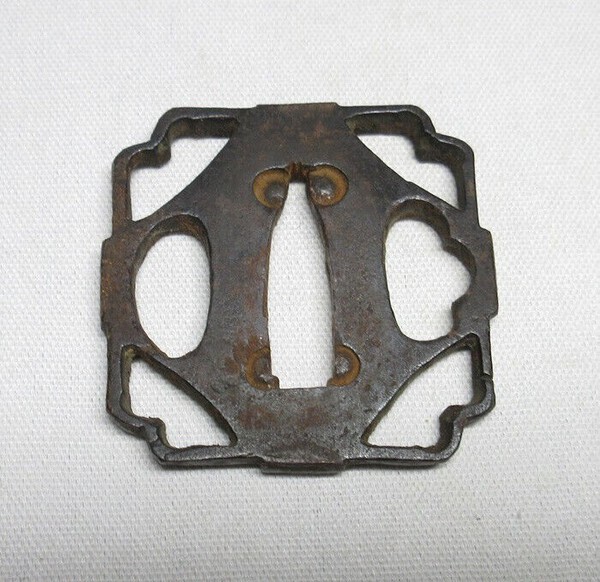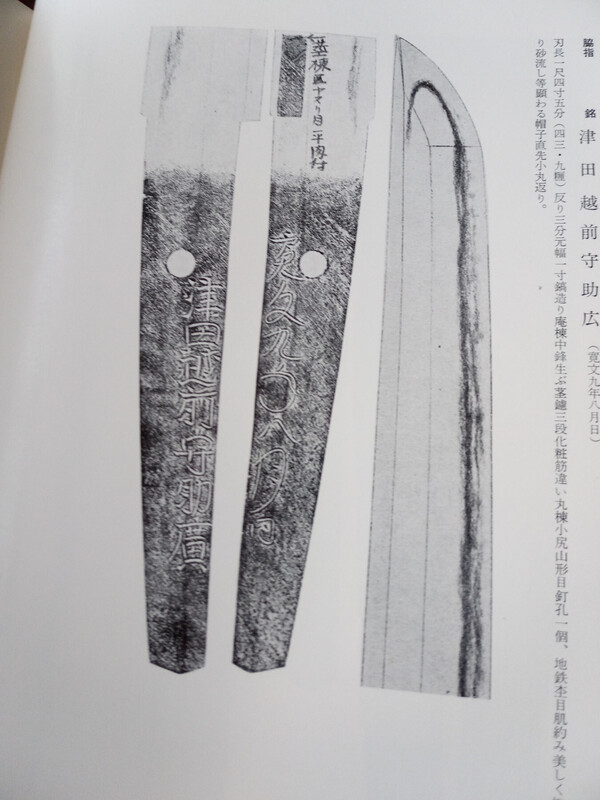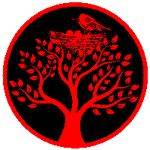Leaderboard
Popular Content
Showing content with the highest reputation on 04/19/2024 in Posts
-
5 points
-
5 points
-
Recently I have been working with Ted Tenold (Legacy Arts) in offering high quality nihonto prints on canvas. Ted worked closely in partnership with Darcy, and some of the images will be recognizable as swords and fittings that were offered on Yuhindo in the past. Others are a swords that Ted and I worked together on more recently. Please see below for a list of prints that are presently available. The dimensions of these prints vary, and in the coming days I will update the gallery to include dimensions for each. https://swordsofjapa...supplies/art-prints/ Please note that the prices presently shown include US domestic shipping for a fully stretched canvas. I will calculate International shipment on a case-by-case basis, please reach out to me directly with any questions and I would be happy to discuss further. Best regards, Ray4 points
-
4 points
-
Sold as Dai/Sho, both are iron and fairly large, both have 24 petals (菊花 Kik-ka) and both have a kōgai-ana on omoté left, suggesting use for tachi. (?) Dai: 9.3 x 9.3 x 0.5 Sho: 8.8 x 8.55 x 0.45 My guess is Muromachi~Momoyama. So how could they be Dai-sho? Should I really be keeping them together? Why are these unsigned chrysanthemum tsuba called Saotomé? Etc., etc.3 points
-
3 points
-
Is that "manhole cover" type tsuba hand forged or cast!! Ha, ha, ha, ha, etc. Just having some fun! With respect, Dan3 points
-
The blade was submitted in the September 2022 shinsa. "04" on the topleft means 4th of Reiwa.3 points
-
A value of a certificate issued by a reputable and trusted organisation in principle (without specifying organisations per se) lies in the implied assurance the reader draws that a panel of knowledgeable experts have examined the item. In most cases, these knowledgeable (usually Japanese) experts are much more adept and skilled than us here in the West and reputationally and empirically they are trusted. If you look at different organisations in Japan, in general they attest slightly different things. But a common denominator seems to be: - the item is authentic - of a certain (old) age - worthy of preservation Therefore to the user, the value lies in the assurance they are not buying eg, a plexiglass armour made yesterday or a gimei sword with blatantly wrong signature or a cast menuki that purports to be Goto yet was made in China. You will need to undertake a further study of the various certificate issuing authorities and I recommend you visit their websites (both Western branches and HQ Japanese branches) and use something like Google Translate to read what their certification actually means. After the initial take, then you ought to look at what it might mean if the certificate also mentions a signature which is on the certified item: - does the authority / panel agree with the signature - does it “authenticate” the signature and accept it or does it not Etc etc. This is where it becomes much more involved and interesting.3 points
-
出入平安 = peace wherever you go 一帆風顺 = smooth sailing 一路平安 = safe trip 阿彌陀佛 = Amitābha The first three are standard idioms to say to someone who is embarking on a journey.3 points
-
O Suriage Tachi NBTHK Tokubetsu Hozon with attribution to Kokubunji Suke Kuni late kamakura Sayagaki by Mr Tonobe 69.2 cm He was originally from the Ichimonji kei in Bizen of which his Father was also a sword smith Sukekuni then went to the Bingo Mihara group to live and work Rated Jojo saku The Koshirae has menuki of the Hosokawa clan Many thanks to Mike Yamasaki for selling this to me3 points
-
I think they they work well as a married daisho. As Alex pointed out though, the difference in metal thickness around the hitsu-ana is the most obvious difference between the two, followed closely by the slightly different shape of the two hitsu-ana. These two differences are probably what makes them not a "true" daisho in my opinion. I think the surface condition between the two is acceptable as there is no guarantee that a daisho would be stored in a daisho kiribako, which leads to the possibility of different rates of storage/environmental conditions (that can subsequently lead to degradation). The tagane ato, if added when fitting (and not as decoration) does not need to be similar, as this can be needed at differing times from multiple fitment activities. Having said that though, if both are fitted at the same time by the same person, I would expect that (like me) they choose the same punch/method/locations? I think the size relationship is also acceptable, being large is typical, and if your have a large Katana guard, you don't want a comparitively miniature Wakizashi daisho guard.3 points
-
Some additionnal photos that allow to better see the kanji. Giordy, the blade is from an old french collection. So not coming from Japan without papers. I don't contemplate to send to shinsa. I won't hassel with the shipping and export documentations, and as you said, before a shinsa it means polish. John, some sword are obviously gimei, on other we can have a doubt. For me this mei looks closely to the oshigata. They are not 100% same as oshigata, but you also have difference between 2 oshigata. Looking at the oshigata as a whole, I think this one is close. And I confess that both the state of the nagako with rust and the quality of photo don't' help for an opinion.3 points
-
3 points
-
I haven't been able to shoot anything for over a year due to health issues - but I FINALLY got the studio cleared out, the various wind up stands in place, figured out how photoshop photoshop had screwed up my workflow (and workarounds), etc, and... Just for grins, here's a couple of images of a ko-tosho (or at least that is what the NBTHK thought it was, FWIW) I picked up off of yahoo!Japan not too long ago. I am not sure what the theme is, comments about what it might be are appreciated. The little beastie has a black coating - when I get some more time I will have to ascertain if it's black lacquer (I that might be what is going on) or if somebody put black wax or something on it. I need to pull down the microscope and fix that workflow next, thought that might take a while as I have a whole bunch of other fittings to try imaging. The piece measures74.2mm(H) X 73.3mm(W). It measures 2.9mm(max) at the seppa area and tapers to 2.3mm (max) at the mimi. rkg (Richard George)2 points
-
He was selling a mantetsu at the same time that I believe also went for over 2500. The market seems strong at the moment. John C.2 points
-
Swordsmith is Sado-no-kami Kunitomi Motoyoshi Kunitomi is the smith's working name. Sado-no-kami is his title.2 points
-
林家の家宝 – A heirloom of Hayashi family 二郎記 – Jiro wrote 鉄鐔 – Iron tsuba 越前記内作 – Echizen Kinai made 此初午の鐔は越前福井藩士林左治衛所持の刀の鐔なり – This hatsuuma tsuba was used for the katana of 林左治衛 (reasing?) who was a retainer of Fukui-han in Echizen. 大正大震災にて土蔵焼け落ち焼跡より□見せし品なり – At the great earthquake disaster in Taisho era, this was found among the debris of burnt down storehouse. 昭和乙卯 – Showa Kinoto-U (1975) 林越奈記 – Hayashi Etsuna? (unsure) wrote2 points
-
On one Japanese site I visited there was a photo of some fragments of stone molds with this chrysanthemum design, suggesting that some tsuba of this type at least were cast.2 points
-
2 points
-
By the way I have a gold coin from the Edo Period, a little Himé Koban. On its own it’s probably worth 40,000 JPY. If I send it to Tokyo for certification it will cost me 10,000 JPY to go through the process. If it gains good paperwork it could be worth ¥100,000. But if it fails, I will always know in my heart that it’s an old fake, or a newer fake. Most people in Japan do not seem to bother to file for certificates.(?) So the ‘value’ of the paperwork depends on the reputation of the organization, and paperwork for objects might vary in value depending on your collecting field. Thus paperwork for J guns probably add little to the value of a gun, whereas paperwork for swords which demand serious scholarly judgement tends to be of higher value. Back to your armor above for a moment. Recently I bought a kabuto with paperwork such as yours from the NKBKHK, and personally speaking I am glad, so I value the paperwork and the thought processes behind it.2 points
-
2 points
-
To purists who know everything about katchū, it has little value, simply stating what they already know. To 99.9999% of the world’s population it is a wonderful thing to have, a vote of confidence, a relief, proof, a back-up by the ‘experts’. The paper on its own has little value, but together with the armour they complement each other. If you want paperwork for your armour, this is the best you’ll find, apart from very rare old manuscripts of course by long-dead appraisers. And yes, I like it!2 points
-
Another reason for the difference in condition. Didn't some Samurai walk about with just a wak a lot of the time? at the end of the Edo? Sometimes, 2 swords where size was not that much different. As in nakago ana size. Guess we will never know. Can understand someone wanting a matching set of these type of tsuba in particular, I do............ lol. Have one similar made from copper, had a chance to acquire one to match but other commitments. Kick myself a bit for that, would have made a nice display.2 points
-
2 points
-
2 points
-
2 points
-
In my opinion, this is one of several types of battle arrow-heads. The cross section can be square, but mostly it is rhombic. The YAJIRI for target practice are round and have no NAKAGO (cap type).2 points
-
2 points
-
Hi Piers, no expert The most obvious difference is one seems to have delicate thin metal around the kogai ana, the other quite thick. Patina, level of surface pitting seems to differ between them. Both large as you point out Get the impression someone paired them together at some point. Impossible to say when but who knows, perhaps a previous owner in the past knows they were paired together, family history.2 points
-
@Kiipu 聚宝盆 - jù bǎo pén - Treasure Pot 生意兴隆 - shēngyì xīnglóng - "May your business prosper " or something along those lines. Conway2 points
-
Kevin, are any of yours signed? I had a few, some really nice, but stupidly I sold most of them... In a minute I will upload a photograph of what is said to be a full set of four whistling arrows. All four notes were sounded in order for the start of battle, according to the owner. On the old box are the letters 蟇目箭 (Hikime-sen) which he has kindly transcribed onto paper for the shot. The only other set he has ever seen was in a private collection, gold lacquered and in pristine condition.2 points
-
1 point
-
1 point
-
I did wonder what happened to the other three? I might be able to use my wife's hat box? Piers I like the fine nature of the spokes on yours, very elegant.1 point
-
Piers - let me double check please. So, from the certificate above I can see that it was submitted in the April 2022 shinsa and the certificate itself was issued in December 2022 (14 Dec Reiwa 4). Am I looking at the wrong photo as I do not think it was issued 3 months ago?1 point
-
Thank you! That helped me narrow it down to Mino ju Mitsunaka (美濃住光仲). Doing a quick search yields many results that look very similar.1 point
-
That’s all very attractive, including interesting koshirae and the Tanobe sayagaki—congratulations!1 point
-
Thanks for the comments, Alex, helping to advance the game. The larger one seems to be closer to a perfect ‘maru-gata’ circle. The Tagane hits around the seppa dai are different too. Possibly an owner kept both as alternatives for a particular tachi…(?)1 point
-
Firstly, apologies. I know that in many literary works such as Kabuki they are often referred to as Yanone', perhaps a more poetic word. On the other hand, living in Japan for many a long year, and bending my ear to many a long yarn, I have only ever heard of them referred to here as 'Yajiri'. Seeing that we had a thread on Yanone polishing, I thought it might be a good opportunity to present the other side of the coin and get the word 'Yajiri' up there in the headline! (Direct Action) It might be worth restating the Japanese perception/orientation of arrows, opposite to us in the west. We talk about an 'arrowhead'. The Japanese saw a field sown with arrows, so the part buried in the ground or stuck into an enemy body was not a 'head', but a -ne (root) or -jiri (from Shiri) butt/bottom. Recently I have come across some interesting examples, which might be good to post here. Suffice it to say that there were both common iron 矢尻 Yajiri which, once fired, were probably no great loss, (besides you could re-use the enemy's ones) and then those wonderfully intricate (and expensive) Yajiri (Yanone) which were probably shot off only when there was someone guaranteed to retrieve your arrowhead for you. Word of warning, as usual. *There are many examples of 'fake' yajiri on the market, and the very high cost of a good one means that there are also modern reproductions out there made to look old. Can we always tell the difference? Perhaps posters might want to give out pointers for spotting 'wrong-uns'.(?)1 point
-
Thanks Piers. Wanted to make sure this is the real deal and not some knock off etc.1 point
-
1 point
-
1 point
-
1 point
-
1 point
-
1 point
-
1 point
-
1 point
-
1 point


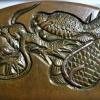

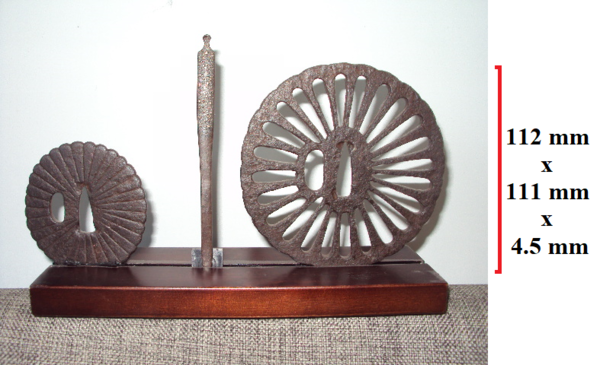
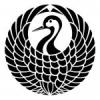
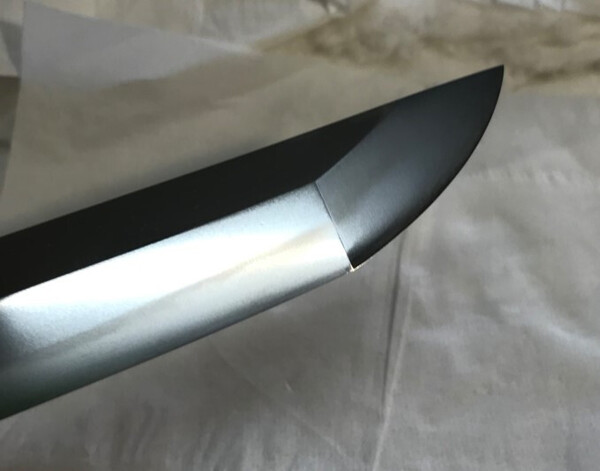
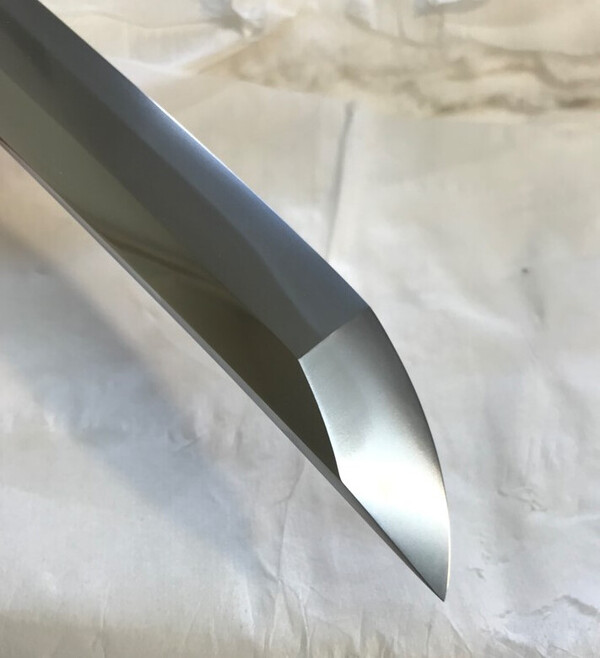
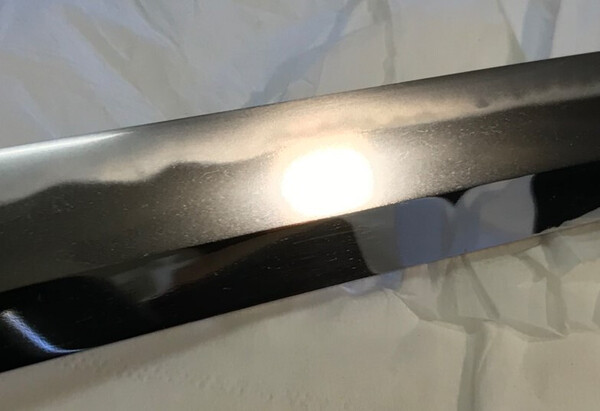

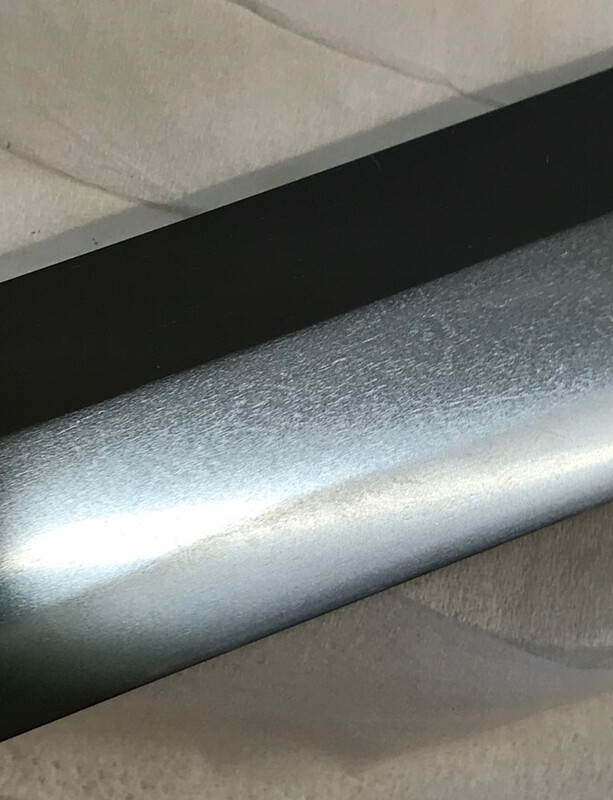


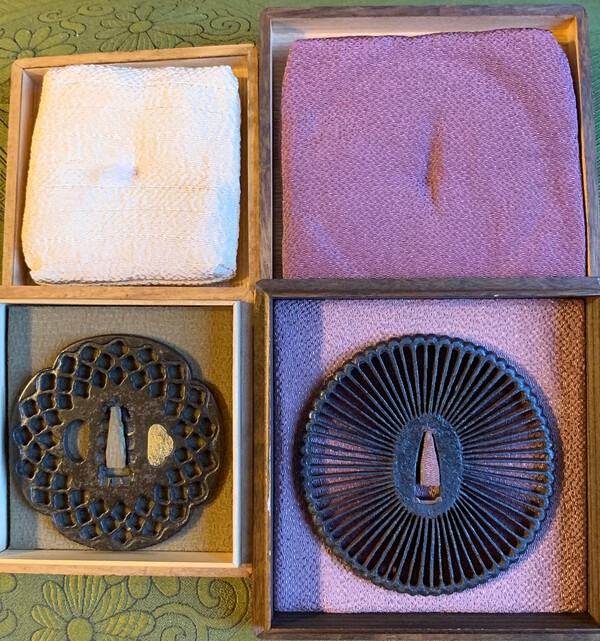
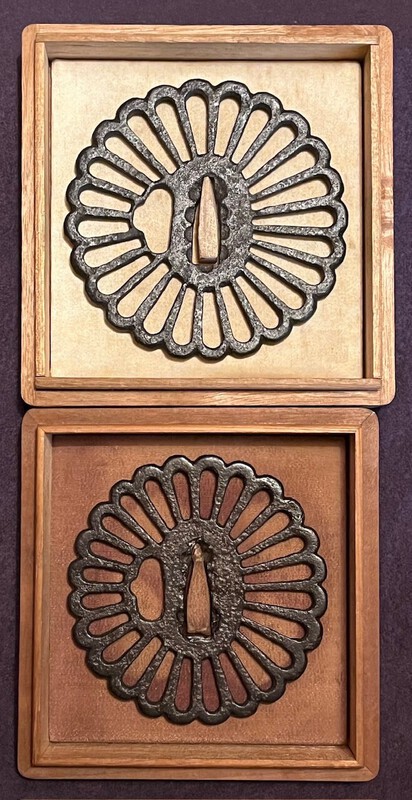
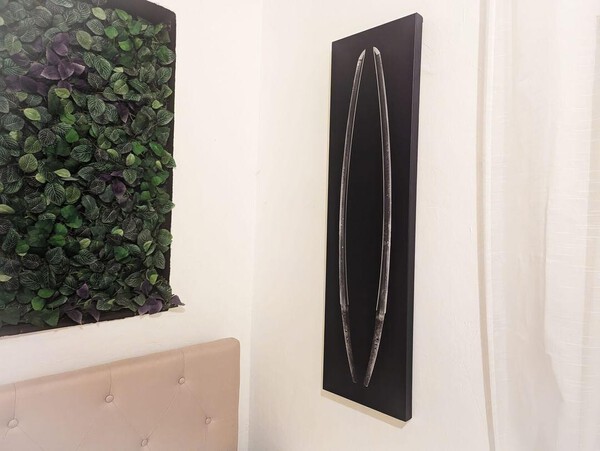
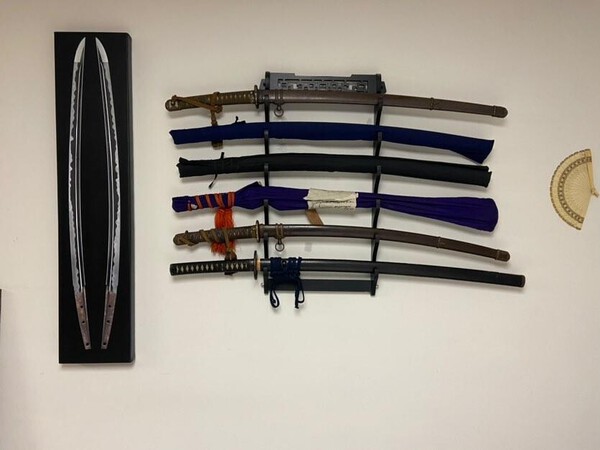
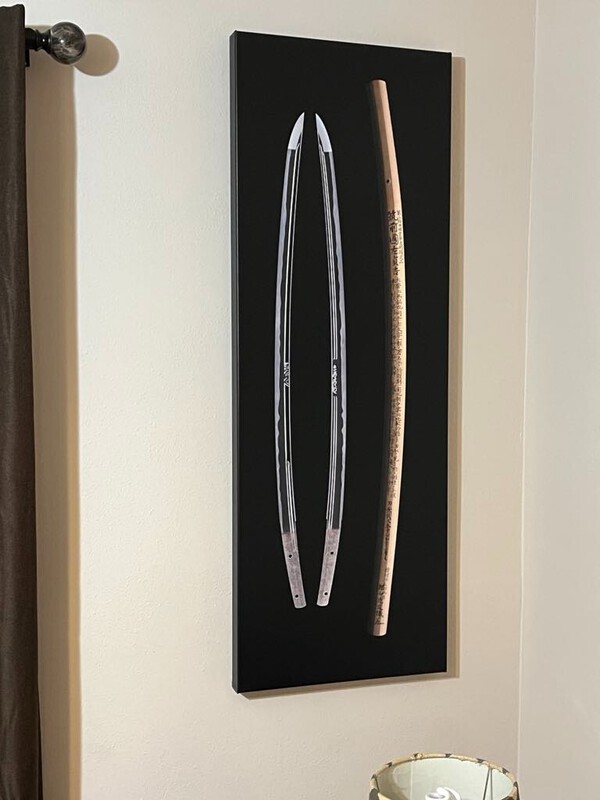
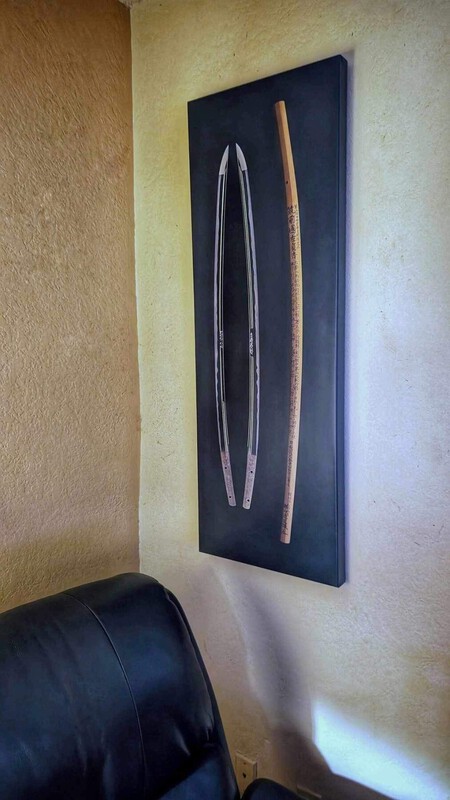
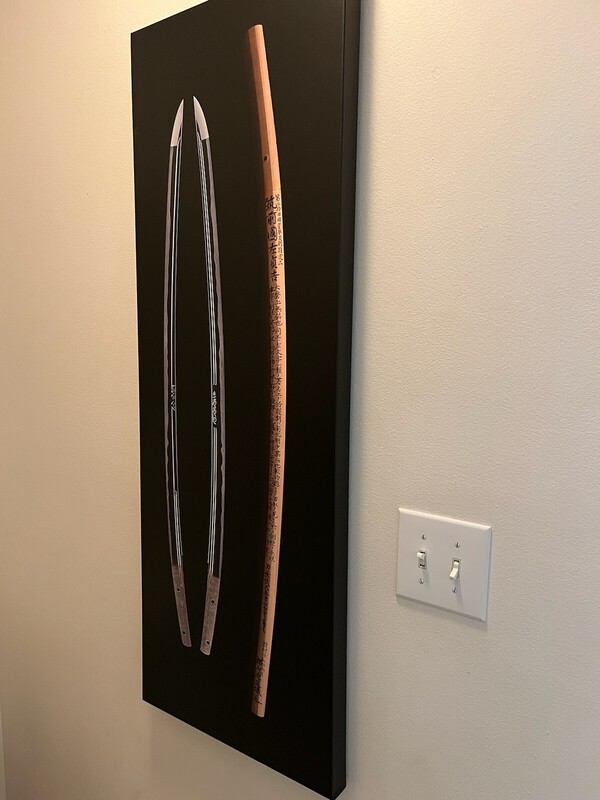


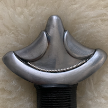
.thumb.jpeg.b6781a624c1ec57b977889a7af4fe096.jpeg)

.thumb.jpeg.e9fc11192f15aba3a226ef366431eb80.jpeg)








